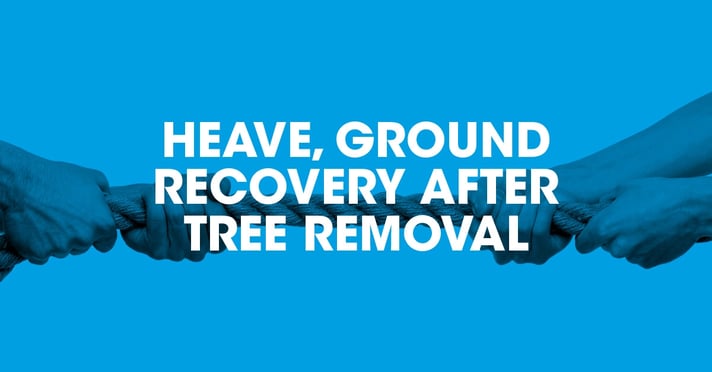What is heave?
Ground heave refers to the upward movement and expansion of the ground, mainly associated with low permeability soils such as clay. When exposed to water, the soil absorbs moisture, expanding and rising upwards, causing the ground to heave.
What are the Warranty providers concerns?
Where areas of land require tree and vegetation removal to enable the construction of buildings, the impact of removal can create issues of heave in low permeability soils.
When trees and vegetation are removed, their uptake of water from the ground is also removed. That water will return slowly to the soil causing it to swell and potentially heave, and this process will continue until a state of equilibrium is achieved.
Where elements of construction that can be affected by this heave do not have the appropriate precautions in place to safeguard against the effects, this can result in structural damage to buildings and associated services laid into the ground e.g. drains.
Warranty stance
Where Developments require the removal of trees and vegetation to enable the construction of a building(s), a failure to apply suitable controls to combat the effects of heave is considered to compromise the ability of the building(s) in meeting with the Functional Requirements and Performance Standards stipulated by the Technical Manual, notably those relating to structural performance and durability.
What Developers should action after reading this document?
Developers should ensure that a site investigation is completed at an appropriate level for the risk in accordance with the relevant British Standard. All site investigations must be dated within 5 years of construction starting on site.
Site investigations should be used to identify the potential for heave and must include identification of the potential effects of removing trees and vegetation prior to construction, and/or, the effects of retained trees and vegetation on site will have on the volume change potential of the soil.
As it is often difficult to know how long it may take the ground to recover following tree and vegetation removal, Developers should consult with a registered arboriculturist. The amount of heave following the removal of a tree depends upon:
- The species, maturity and water demand of the trees and vegetation.
- The permeability of the soil.
- The availability of free water.
Where trees are present or have recently been removed, a site plan will need to be provided to show the tree and hedgerows that have influence on any foundations.
The design and specifications of all affected elements of the construction (e.g. excavation depths, distances from trees, types of foundations, sub-structure, floors and drainage) shall provide a clear indication of the design intent, appropriate control measures for heave and demonstrate a satisfactory level of performance.
Where rehydration and swelling of the soil is considered a risk, the design of all impacted elements of the construction e.g. foundations, sub-structure, floors, and drainage should be drawn up as if the trees and vegetation were still present. Designs should be carried out by an Engineer taking into account:
- The performance set by the Warranty provider as detailed in the ‘Foundations’ section of the Technical Manual.
- The site investigation report conclusions in relation to the soil characteristics on the site.
- The recommendations incorporated within the registered arboriculturist and geo-technical consultants’ reports.
The design and specifications should be submitted to the Warranty provider before work commences on site.

